Discussion: Perceptions of a garden being 'dated'
Back when I was a college freshman, there was a show that I really enjoyed called "Crockett's Victory Garden". I was a landless wannabe gardener and I got my fix through watching this show, listening to the affable Jim Crockett. It was through some of his authored works that I really got the bug to try different types of plants. I read that after his death and succession by a number of new hosts, the Victory Garden show was majorly revamped since it was percieved as "old fashioned and dowdy".
This got me to thinking about garden design and the arbitors of taste. Who determines that something is *too* dated and sets the parameters of style? It seems like there is such a plethora of approaches to choose from these days from the formal French kitchen gardens to the informality of specialized grass/prairie meadows that it would be difficult to make a pronouncement on a major style.
What do you consider to be a "dowdy garden"? Which shout out as the garden "shag rugs" of past planting styles? What do you think is being touted right now that will become the embarrassing do-overs of the future?
Comments (32)
gardengal48 (PNW Z8/9)
16 years agoInteresting question :-)) Gardening and landscaping styles have certainly evolved over the years as the popularity of hobby gardening has increased. Like any commodity, new introductions and various fads come into play for a period of time until they are surpassed by yet more introductions or newer fads. Plus, the gardening demographic has changed and rather radically in recent years.
As home gardening has become more popular, home gardeners have become more sophisticated and their choices in plants change. And with an increased interest in gardening as a whole (not to mention a huge increase in housing developments and population in general), landscaping and landscape design is much more widely available and affordable to the masses. In the early 60's and 70's, the activities of landscape design and professional landscaping tended to be limited to only to the very wealthy - Joe and Jane Average Citizen did their own "landscaping" and not knowing all that much about it, planted what was available and to mimic what their neighbors were doing. 'Style' really didn't factor into the equation.
I'm not sure how I would term any particular style as "dowdy" but there are some certainly outdated landscaping practices which unfortunately are still being practiced: "bedding out" or huge sweeps of glaringly colorful annuals that have to be replaced seasonally; the routine pruning of any shrubbery into uniformly rounded meatballs regardless of natural form or structure; the ubiquitous entryway sentinals of overgrown yews or massive arborvitaes are a few that come to mind. And maybe the biggest is the established garden that is just allowed to grow on with minimal attention - trees and shrubs become huge and overshadow and overwhelm relatively small properties and the garden remains relatively static and with minimal interest or diversity.
Personally, I believe "good" landscape design is pretty timeless, in much the same way good architecture is, regardless of style. And in the same way that structures of various architectural styles must be continually be upgraded to preserve and maintain their viability over time, landscapes as well need that ongoing attention. IMO, the "shag rugs" will be the ones that were not well thought out or carefully considered for the setting/context in the first place.
Embothrium
16 years agoCertain plants and layouts are associated with certain periods (and their architecture). This is somewhat fixed, at least part of the time. For instance, modernistic rectilinear buildings and architectural (bold) plants will always look well together.
Unfortunately, the close "maintenance shearing" of informal plantings of shrubs and brutal topping of trees seems to have become much more prevalent here in recent years, rather than abating as property owners supposedly become better informed and more interested. It is true that the most glaring examples are commercial properties, but that could just be because these are often large (shopping centers and business parks) and usually highly visible.
Related Professionals
Cary Landscape Architects & Landscape Designers · Fillmore Landscape Architects & Landscape Designers · Billerica Landscape Contractors · Middletown Landscape Contractors · Amesbury Landscape Contractors · Burien Landscape Contractors · Dudley Landscape Contractors · Kailua Landscape Contractors · Pomona Landscape Contractors · Waldorf Landscape Contractors · Hull Decks, Patios & Outdoor Enclosures · Kansas City Decks, Patios & Outdoor Enclosures · Morgan Hill Decks, Patios & Outdoor Enclosures · Saint Louis Park Decks, Patios & Outdoor Enclosures · Folsom Swimming Pool Buildersduluthinbloomz4
16 years agoI cut my gardening teeth watching Jim Crockett, too. Not so much interested in the current version of the V.G. although yesterday's program featured Longwood Gardens in Kennett Square, PA., to which friends and I made many a day trip or overnighter to enjoy.
I'm open to yay or nay, but many of the arbitors of garden style today are those who would look over the hedge and say "if this were mine, I'd ..." and if there was a vehicle for exposure to the masses for this vision of what a space should be": well, I mean, who wouldn't plotz at being a contributor to the Pottery Barn inspired experience?
Surfing around looking for essays on gardening trends that weren't trying to sell something, I came across an old 2001 article.
To wit:
"It is a battle royal. Hoes, rakes and spades at dawn. On one side of the garden fence is Prince Charles, who famously talks to his plants, has a green thumb, nurtures wild flowers and has just shown off an Islamic-style patio at England's Chelsea Flower Show.On the other is Oscar de la Renta, fashion's Prince Charming, in a brand new role as garden designer. On Tuesday, he is slated to unveil his colorful carpet of bedding plants laid out in the grounds of Waddesdon Manor, the turreted French château-style home built for the Rothschild family in Buckinghamshire.
"A garden is such a personal statement," says de la Renta. "It is so beautiful and so fragile  out of neglect in can disappear in less than a year. I like a garden that imitates nature. What I have always hated most about gardening is carpet bedding! But at Waddesdon I have taken the idea of a rainbow and how in a prism a drop of water can be transferred into so many colors. A rainbow is an imitation of nature, and it lasts as little as a garden."
Oscar is a little twee for me. But it does show that styles come and go, get brought back with a new twist, get plotted out on a computer instead of trial and error hand placement, get put together with a new and improved variety of the same old plant. And if all of this wasn't carefully documented, we'd surely be reinventing all over again.
If some or all of the major elements - lot size, set of house, terrain, soil conditions, exposure, hardscape, access, purpose, etc. - are considered, any appropriate plant material becomes part of one's personal vision, trendy or not. The caveat is always there: just because something is liked doesn't make it good, but gardening is such a valuable endeavor on so many levels that even the most amateurish effort shouldn't be discouraged. Many of us will go through a lot of processs before reaching even what we think is right ourselves. We've all put down a "shag rug" or two. Right now I think it's the Knockout Rose craze.
It remains to be seen, with drought conditions persisting in many parts, if growers and garden centers will continue to be able to supply the new and trendy or even the old favorites. And at any cost.
jo_in_tx
16 years agoWell, I'm old enough to remember when Houston's yards were landscaped with miles and miles of railroad ties, and that looks quite dated to me. I admit that they did line my numerous rose beds in my backyard! :)
laag
16 years agoIt is all perspective. My New England baby boomer generation watched the post war suburban landscape Of yews, arborvitae, rhododendrons, azaleas, and andromedas become neglected and overgrown by aging and by a generation less dedicated to maintenance (both by the homeowner and the "professional").
My guess is that the ornamental grasses will not age gracefully either, nor will the lawnless suburban front yard.
I'll point out that with the "modernization" of Victory Garden" came world tours of very old gardens all over the world. The only thing that is old fashioned is the last style that we got sick of.
We don't want our grandmother's living room set, do we? Yet we want her grandmother's antiques.
bindersbee
16 years agoScale, for one thing. When I go and do revamp consults for existing yards, I swear that there were only 10 plants available in 1979 and all of them were too big for a residential lot.
There's no excuse to make that error now because of all the breeding that's taken place in the last 50 years to select out smaller scale plants that fit with the smaller scale yards that came with the 'suburbification' (yeah, it's a real word) of America.
I also think that having no foliage contrast (all green leaved plants) is also dated. However, the opposite will probably become true in the future when too many contrasting plants will be considered tacky.
Embothrium
16 years ago>I swear that there were only 10 plants available in 1979Many residential properties will have only/mostly what was being offered at groceries and big boxes at the time.
happygardenlife
16 years agoI think what dates a garden the most is the hardscape. For example, there have been a lot of trends in bricks that now look dated to me: red bullnose with wide white grout , "manufactured used," etc. I think most concrete pavers are going to look dated, especially as they get bleached out by the sun.
Accessories are also a culprit  think macramé (though I hear itÂs coming back). I think that a lot of the mid-centuryish planters and furniture that are out right now are too severe and will look very dated.
In terms of plants, Boston ferns will forever remind me of the 70Âs. I actually have nothing against them, I just have that association. I think the same thing will happen with flax, mondo grass (esp when planted in a sort of grid pattern), and many orchids.
laag
16 years agoGranite cobble edging and aprons will be "turn of the millemia" classics won't they?
littledog
16 years ago"My guess is that the ornamental grasses will not age gracefully either, nor will the lawnless suburban front yard."
I'm already seeing that with the grasses, both at residential lots and especially at public plantings done by small towns in this area. (central Oklahoma). The latest trend has been to knock out four of five parking spaces at each corner of the main street to create undersized, water starved "green zones" (*just* what those struggling downtown merchants needed; less parking) that are planted with lime green pink flowering spirea, watermelon red and/or bubble gum pink crepe myrtles that are cut back every fall, and scads of ornamental grasses. The overall effect is that the thing was thrown together by someone shopping at the local Big Box store, and that now it needs to be weeded.
Instead of showcasing a revitailized area, it reminds one of a ghost town. You half expect to see tumbleweeds blow across the stamped concrete intersection past the reproduction victorian cast aluminum lamp posts. It certainly doesn't do anything to entice anyone into renting those empty buildings...
Embothrium
16 years agoConcept and execution are two different things. Bungled execution doesn't establish that a concept lacks merit.
Here recently appearing squads of ornamental grasses do seem to increase interest. However, I am seeing a tendency to plant them at ends and corners where evergreen shrubs belong instead.
bindersbee
16 years ago"My guess is that the ornamental grasses will not age gracefully either, nor will the lawnless suburban front yard."
I'm going to respectfully disagree with this- at least for some parts of the country. *I* think a timeless landscape is one that 'gives nod' to the natural landscape of the area it's located in and mimics it in a more refined way. So, perhaps if you live in a Pine Forest- type area, then yes, ornamental grasses might be 'out of place'. Same deal if you live in the PNW or other 'naturally green and lush' places. However, for those of us in the Rocky Mountains or Plains States, ornamental grasses are perfectly in sync with the natural landscape and so they look right at home. They just 'feel right'. What is out of place here are extensive lawns.
gonativegal
16 years agoI think plants aside - what will date today's garden tommorrow will be the overuse of the unilock and belgian stone used for retaining walls, pillars, and front porches especially as they begin to lean and gape from the soil shifting them around.
I prefer natural stone - it's timeless and ages a little more gracefully.
florey
16 years agoStyles that date quickly, were probably put in, just for the sake of change, or a cheap set up, not for love.
A soothing natural sense of connection, will surely, be very slow to date.One horrid, and literally, a 'shag rug', trend of today, is, yanking and chopping everything in a yard, then putting in swathes of little ankle biters. Nothing, can make a mansion, look like a new tract house, faster.
Many decorative grasses, seem to puzzle their owners. Few are pruned. The effect is scruffy, not graceful.
The worst trend, was the rock lawn, with a couple of little evergreens. aaaaack. This, and concrete, are actually harder to keep clean and neat than leafy items.
Boulders, when they are brought in from far away, and left there, for no reason.
Over use of hardscaping, is going to date quickly. A TV channel, [that often just hires personality] does yards that seem designed, to sell product. Many yards shown, end up largely in hardscaping, sometimes 80 or 90 %, with a couple of underscaled green somethings, for trim.
Pruning and relocating existing plant material, rather than razing, can help a yard keep its charisma. Often there's something truly wonderful from long ago.Yes, mature plantings can be a challenge. Yet many can be rethought, modified, and kept. It's interesting to see yards change over decades. Judicious pruning of very large shrubs, is a trend that is going to grow. Experts in graceful shapes, like bonsai masters, will be sought after. They can preplan for the spring cuts, that will minimize an awkward stage. Azaleas, for instance, can be loped off at the ground, like a lilac.
There seems to be a loss of the concept, that it's wrong to cut down a tree, just because it's blocking sun. They can be thinned, and let in more light.
Most cultures used to hold trees sacred, because of their age. Threats to a foundation, used to be the only reason to cut, or the neighbors would look at you funny, like runoff in a drought.The profits in hardscaping are HUGE.
It's possible that mere trends of style, and sales, can cause weather changes - like line storms, and droughts.
Losing the cooling effect of trees and mature shrubs, and gaining the heat retained in hardscaping and paving, are a part of current trends. The term 'urban heatsink' comes up on other threads. These are unintended effects, but real.'Dated' and 'update' are sales concepts. They should not overrule the love of plants, and good design. There is a LOT of pressure for the 'new' over the good, in real estate. We may end up missing some old trends. Some new ones may be leafier and 'greener'.
laag
16 years agoIt can't be overlooked that affordability drives trends.
The emergence of modular block walls and concrete pavers is directly due to affordability. Some of that affordability comes from the cost of making the product, but most of the savings comes from labor costs. That is due to the standardized practices and the self confidence of contractors which that industry has developed by training and "educating" contractors. Now you no longer need a rare and highly skilled ($$) mason to build a wall or patio.
In the process, they also made a lot of contractors realize a much smaller leap based on their newly acquired skills and confidence which is to work with stone and clay brick.
Clearly, there has been a major revival in the use of stone hardscapes in the last 10 years as well.
Part of the hardscape revolution is driven by the desire for site amenities that require leveling of areas (retaining walls) and paved surfaces. One thing that is unchanged in landscaping is that it is largely driven by people seeing things that they like (visually or functionally), envisioning having something similar, and then following through with imitating it.
The contractors of the world can only sell what someone wants to buy. They can only influence what people want by its affordability. It is like eating at McDonald's. We can all agree that there are a lot better tasting and healthier lunches out there, but when you only have three bucks in your pocket and you are hungry, that dollar menu makes sense.
isabella__MA
16 years agoDated gardens;
Bindersbee your observation about too much contrasting foliage in one location will be true. All new commercial buildings have the obligatory red and yellow berberis or spireas. At least bedding plants get changed out seasonally.
I think water features should be added to the list. The kits from the box stores are available and can be installed with minimal skill. Nearly all of the landscape shows add a "water-feature" or a stream to take up valuable space and add variety to the space. If you have an interest in water plants or fish, they have a function in the landscape, but only for decoration they are additional maintenance. A pond requires special maintenance, which many probably don't realize when they get them.
tom8olvr
16 years agoA soothing natural sense of connection, will surely, be very slow to date.
Gawd, I sure hope THIS is true... although it makes me think who's the judge of 'dated'...
I found a pot - a beautiful ceramic pot several years ago - I love the pot... it's huge and speckled blue with deep ridges - one of a kind... I invisioned water running down it's rippled sides... Although I haven't found the right place for this pot - or how to set it up just yet (dang thang weighs 80 lbs) but it bothers me to think that my pot would be someone else's:
"water-feature" or a stream to take up valuable space and add variety to the space. If you have an interest in water plants or fish, they have a function in the landscape, but only for decoration they are additional maintenance.
I guess coming to terms with 'dated is in the eye of the beholder'...
bindersbee
16 years agoThe way something is designed is in large part a reflection of society. The reality is that most households are dual income households. This MAY mean they have more money to spend on landscaping (hardscaping) but less time, desire and inclination to garden or actually care for a yard.
I don't think the abundance of hardscaping will be a 'dated' look. Perhaps HOW it's installed or which products are used will date it- like the fashionable 1970's railroad ties- I can see the interlocking paver walls fitting into that category. If that's the angle you're coming from, then I can agree with that premise. The further you get from 'natural' the more dated something can become.
In terms of HAVING a lot of hardscaping- no, I don't think that will be at all dated. Whether we want to face up to it or not, fewer people have the time and desire to be involved with nature in any way which requires stewardship or work. They want to go out on the back patio, grill up some dinner and maybe even dine al fresco. They just don't want to spend a lot of time pushing a mower, weeding, pruning etc. And many just simply don't know how and/or aren't interested in learning.
Whether a look becomes 'dated' or not depends in large part on how it reflects the greater landscape around it. How it 'fits in'. What that means for me here in Utah and what that means for someone in Florida or Maine or California are different things.
tibs
16 years agounilock and belgian block will probably be all the rage in several dacades when they "age' (if they do and don't fall apart) like the old paving bricks landscapers scarf up and recycle.
burntplants
16 years agoHmmm... try this link to an earlier discussion.
As far as "embarrassing do-overs of the future," I have to agree that the foliage rainbow look will be very dated soon. As well as the ponds--they are being put in by people trying to keep up with the Jones', not people who really want ponds. When the upkeep on a pond stops it becomes at best an eyesore, at worst a safety hazard.
Here is a link that might be useful: Front yard fashion? What decade are we in?
bindersbee
16 years agoAh yes, rubber mulch! I worked the local home and garden show this past week for the landscape design + build firm I work for and could not believe how many people asked about it. No. I'm sorry. I will never use or recommend it. Well, I take that back- MAYBE for a playground surfacing but even then I'm not sure. I think the rubber mulch takes tacky to a whole new level.
Oh- and Austrian Pines and other oversized evergreens (for a residential lot anyway) are hallmarks of the 60's and 70's. I think there were only like 8 trees, 9 shrubs and 10 perennials available in that era since every dang yard I'm called to rework has those same plants.
garyfla_gw
16 years agoHi
Had to throw in a few comments because I live in a subtropical climate where "old" buildings are about 10 they don't build additions but whole cities and 9 buyers out of 10 are from temperate climates and have No idea what grows
or even more important what will devour the house in a few years.lol
The entrance ways to these places are fascinating because they spend fortunes on mature plants ,spectacular guard houses and of course PALMS lol
One in particular I'm watching is a 3 story waterfall
cascading down on 4 sides of a spanish fortress . ,only function is to house the "guard " who is never there lol.
This is surrounded by Poyal palms planted in perfect spacing rows fully grown of couse and of course there must be a Coconut grove even though dwarfs get huge very fast. and they are way tooo close together already
Guess what?? The "waterfall " can't be run because the reservoir can't keep up with the water loss. The drift is killing the palms and algae is already growing down the sides of the fortress. The sound of the water falling is deafening and you need an umbrella to admire the landsape.
The aroma of Chlorine can be detected a block away.lol
They planted Royal palms right over a parking area and the fronds can weigh 200 pounds falling 30 feet . Does wonders for cars underneath lol.
I see great modificatiions to the landcape already and suspect there will be a complete redo within 6 months lol
Hows that for "dated" lol garyccdry
16 years agoHmm, how to separate good/bad "taste" from "too old" from "old enough" (back in fashion)?
Typically, 1960-70's is "too old".
OTOH, i think the alternating diamonds of red lava and white rock has not made a comeback, and i assume that style began in the 1950's. but anything older i guess has become "old enough" to be rediscovered?Someone mentioned RR ties are now "old". yeah.
Solid juniper.
Someone mentioned "cobbles" (the ribbons of river-rounded granite, all of approx same size, and often laid at same grade as the rest of the area, therefore looking even less like a dry streambed :-) )
Some old styles seem to survive as favorites for certain people. "bon bon bonsai", aka "Thai bonsai" (How did "Thai" became associated with this?)
Aren't glass gazing globes passe? they were so short lived, i guess they were a fad. (also they were an accessory, not a complete style.)OTOH, commercially, huge (granite) balls were the rage. i think those are now also passe. if huge antagonistic aliens ever invade the earth, hopefully those huge balls will keep them distracted for a while. "Spl!eeeryg! it's been lightyears since we've played a match of duckpins. jolly good."
Rubber mulch. Hmm, made from flayed tires? "you can have any color, as long as it's black...." attractive to the bsdm crowd i suppose...hoghaven_duluthmn
16 years agoI am finally old enough to know that "taste" is fickle. If I feel like planting my entire front yard in red,white and blue petunias, sticking in some pink flamingos (they are collectors items now,I guess) and throwing in some plywood cutouts of bent-over gardeners, I'm gonna do it.
I am tired of interlocking keystone retaining walls and gazing balls, but I may like them next year.
Things that are timeless to me are old farms with 50 year old lilac hedges, grand old oak shade trees, and peonies, irises and daylilies. Then there should an old tractor tire planted with petunias and marigolds. There should be a bunch of hollyhocks planted by a shed.
I think a grand old mansion flanked by columns of arborvitae and trimmed hedges with a formal garden is very fitting.
I think change is fun--it's too bad that sometimes we succumb to what the "critics" say is "good taste".
isabella__MA
16 years agoBeing "dated" is simply being identified with a particular era in time. There is nothing critically good or bad about being dated, as it is simply an observation.
Being dated doesn't necessarily imply bad taste. Classic garden design styles and heirloom plants are dated.
Embothrium
16 years agoAnd a building associated with a particular period may look better with plants from that period.
-------------------------------------------------------------
"The Bottom Line
 Rubber mulch is not as effective as other organic mulch choices in controlling weeds
 Rubber mulch is highly flammable and difficult to extinguish once it is burning
 Rubber mulch is not permanent; like other organic substances, it decomposes
 Rubber mulch is not non-toxic; it contains a number of metal and organic contaminants with
known environmental and/or human health effects"Here is a link that might be useful: The Myth of Rubberized Landscapes
inkognito
16 years agoI'm going to have to disagree with the first part isabella. Saying something is 'dated' or 'old fashioned' is judgmental but I do agree with the second part when you say it has nothing to do with taste. In fact I would even go as far as to say that 'fashion' per se has nothing to do with taste.
In other areas we refer to 'the classics' or 'classicism' as being beyond time or 'timeless', I would say that there are garden styles that fit into this category.
Just in case we are still looking for an arbiter of taste let me add this: shag pile rugs didn't 'become' tacky, they were always tacky. An ostentatious display of wealth is always tasteless.prairiegirlz5
16 years agoShag is back! Take a look at this link.
I think hoghaven gave some great examples, there IS a difference between timeless and dated.
And it's true, there's no accounting for taste! :)
Here is a link that might be useful: Shag is Back
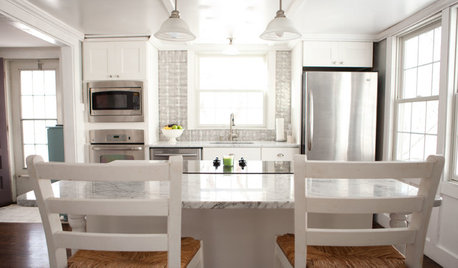
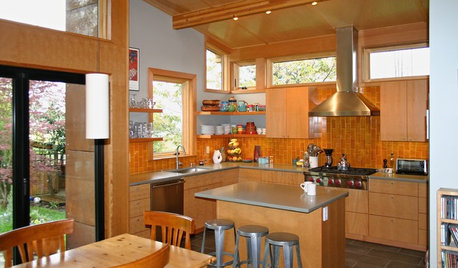

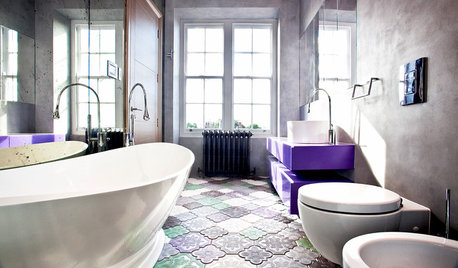

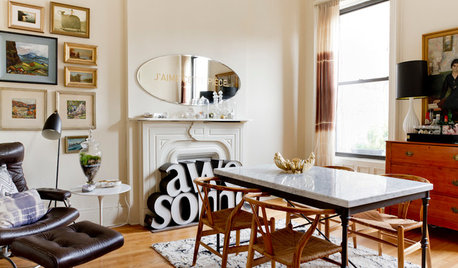
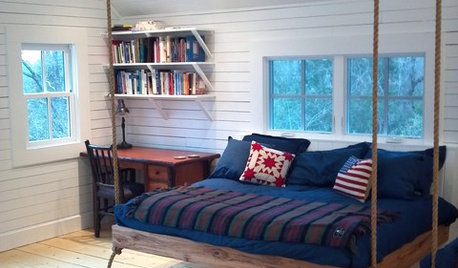
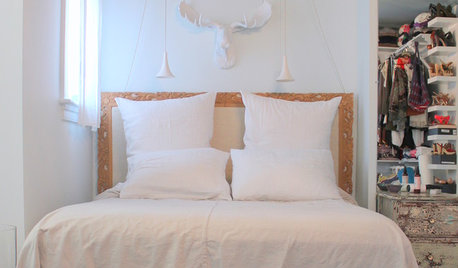
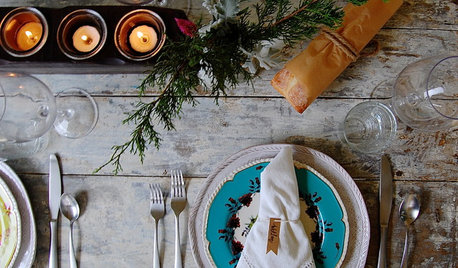







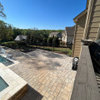
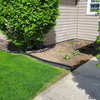


laag